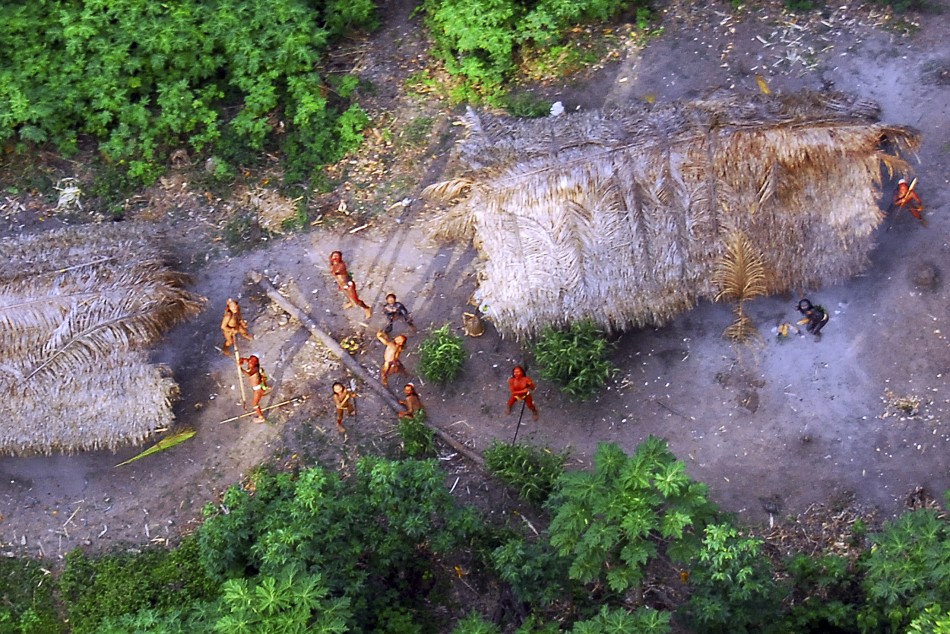
The Brazilian indigenous protection service had been guarding the tribe, but their outpost was attacked by a heavily armed group from Peru. Since the raid, which was allegedly perpetrated by cocaine smugglers, there have been no sightings of the tribespeople anywhere.
The tribal village sat in the jungle near the Peruvian border on the western edge of Brazil. State agencies, who initially left the indigenous people alone, are now searching for any survivors.
"We decided to come back here because we believed that these guys may be massacring the isolated [tribe]," Carlos Travassos, the head of Brazil's department for isolated indigenous peoples, told the Brazilian news Web site IG.
"We are more worried than ever," he said. "The situation could be one of the greatest blows we have seen to the work to protect isolated Indians in decades. A catastrophe ... genocide!"
Guards reportedly found a backpack punctured with broken arrows on the tribe's now-empty land. The bag is assumed to have belonged to one of the armed men who stormed the area with rifles and machine guns. Police have detained a Portuguese man with a criminal record in connection with the event.
"Arrows are like the identity card of uncontacted Indians. We think the Peruvians made the Indians flee. Now we have good proof," Travassos added.
According to some accounts coming from Brazil, the Peruvian gang may still be present in the area, protecting the land with machine guns. It is assumed that the gang wants to use the territory to establish a trafficking route to Acre, Brazil, or to harvest the coca plant, used to make cocaine.
"We are extremely worried about this situation," Fiona Watson, Brazil campaigner for Survival International. "It really highlights how out of control things are on the Peru side, and the urgent need for constant, long-term protection for the uncontacted tribes on both sides of the border."
Brazil first released photos of the tribe in February. They were discovered during a flyby in 2008.



.